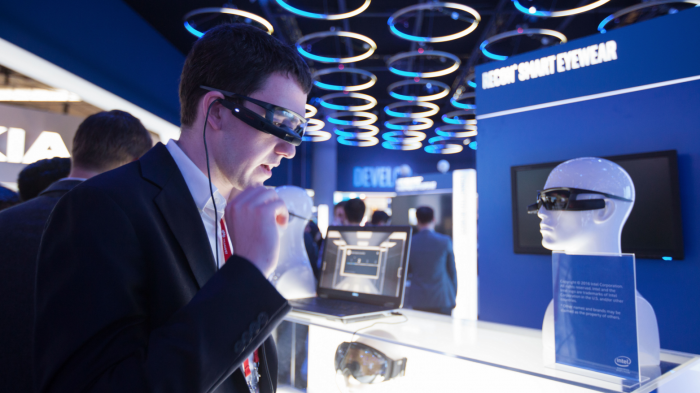Intel Might Be Making an Augmented-Reality Headset, Hoping to Cash In on a Rising Industry
Is Intel, the world’s largest chip maker, building an augmented-reality headset?
That’s what this Wall Street Journal piece reports, citing unnamed “people briefed on the company’s plans” as saying that Intel may be building a headset to blend digital imagery with reality and planning to let other companies manufacture it.
The story also says Intel intends to include in the headset its RealSense 3-D camera technology, which can be used for things like depth sensing and finger tracking.

Such moves would make sense, as major companies like Microsoft and Google are already involved in augmented-reality projects—Microsoft’s planning to ship its HoloLens headset to developers at the end of March, while Google is reportedly working on a retooled version of Glass meant for several types of work. Meanwhile, startups ranging from the heavily funded Magic Leap, which has raised $1.4 billion, to the much smaller Meta, which has raised $23 million, are also working on headsets.
Chances are, more companies are going to be entering the AR fray in the coming years. Putting together its own headset, especially one that is ripe for others to make on their own, would likely help Intel cash in on growing interest in augmented reality and its sibling, virtual reality—even if it takes either or both a long time to become mainstream.
For the moment, Intel won’t officially confirm whether it has plans for augmented reality. But the person responsible for RealSense, Achin Bhowmik, noted that Intel has previously built prototype products in its efforts to get customers interested in the company’s components.
(Read more: Wall Street Journal, “Augmented-Reality Startup Meta Ups the Ante in the Headset Race,” “10 Breakthrough Technologies 2015: Magic Leap,” “Mark Zuckerberg Says It Will Take 10 Years for Virtual Reality to Reach Mass Market”)
Keep Reading
Most Popular
Large language models can do jaw-dropping things. But nobody knows exactly why.
And that's a problem. Figuring it out is one of the biggest scientific puzzles of our time and a crucial step towards controlling more powerful future models.
How scientists traced a mysterious covid case back to six toilets
When wastewater surveillance turns into a hunt for a single infected individual, the ethics get tricky.
The problem with plug-in hybrids? Their drivers.
Plug-in hybrids are often sold as a transition to EVs, but new data from Europe shows we’re still underestimating the emissions they produce.
Stay connected
Get the latest updates from
MIT Technology Review
Discover special offers, top stories, upcoming events, and more.